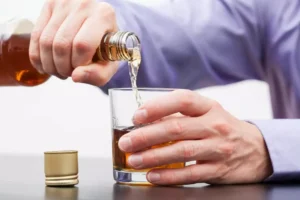
Too often, the loved ones of a so-called high-functioning alcoholic end up as collateral damage, and that was the case with Diane Shuler. In this sad incident, her son and three nieces also lost their lives, casualties 5 types of alcoholics of a disorder that selects its victims mercilessly and without discrimination. Unfortunately, most functional alcoholics live in denial, too ashamed or too proud to admit the truth to themselves or others.
Medically Assisted Treatment (MAT)
- While there are many types of alcoholics, people don’t have to be raging alcoholics to have a drinking problem.
- If you or anyone you know is undergoing a severe health crisis, call a doctor or 911 immediately.
- Intermediate familial alcoholics drink on an average of 172 days a year, consuming five or more drinks on 54% of those days with a maximum of 10 drinks.
Medically-supervised withdrawal, evidence-based treatment, behavioral therapy, support groups, and plans for life after treatment can all aid a person who is looking to recover from alcohol addiction. The disease of alcoholism, officially diagnosed as an alcohol use disorder, can manifest differently from person to person. Some alcoholics may be able to hide their drinking fairly well and appear to be on the ball at work and at home. Others may experience some of the more devastating potential consequences of compulsive drinking such as serious medical problems, a decline in job performance or job loss, and ruined relationships.

Treatment for All Types of Alcoholism

The Recovery Village Atlanta provides robust treatment for those struggling with alcohol misuse. Our facility offers residential, partial hospitalization, intensive outpatient and medical detox programming. Reach out today and one of our Recovery Advocates can answer your questions and guide you through the admissions process.
Binge Drinking
They have the highest rate of emergency room visits for their drinking, and they’re likely to suffer medical problems due to alcohol abuse. The survey also included responses from individuals in treatment as well as those not seeking treatment. Some research shows that the traits of low harm avoidance, high novelty seeking, and low reward dependence characterizing Type 2 alcoholics are similar to the traits of those with an antisocial personality disorder. It’s no surprise, then, that many Type 2 alcoholics are also diagnosed with an antisocial personality disorder. This subtype includes 19.5% of those who struggle with alcohol use but appear to be functioning.
Getting Treatment Before It Is Too Late
And because they don’t look or act like the stereotypical alcoholic, they’re often in denial about their drinking problem. Functional alcoholics have an average household income of almost $60,000 and the lowest rates of legal issues. In addition, 17% seek substance addiction treatment at private facilities. Unlike young adult alcoholics, antisocial alcoholics don’t drink socially with peers. Instead, antisocial alcoholics drink alone and typically struggle with co-occurring mental health problems. In the U.S., the young adult alcoholic subtype comprises 31.5% of all alcoholics.
Get Help for Alcohol Addiction in Las Vegas
Compared to the other subtypes, this subtype has the highest rate of co-morbid mental health conditions, such as depression, anxiety and bipolar disorder. It’s also common for people within this subtype to have co-occurring substance use disorders with marijuana, cocaine and opioids. While they only account for 9% of those dealing with alcoholism, they’re the most common subtype you’d come across in treatment.
- This subtype makes up 9% of alcoholics and starts drinking very young (15) but develops alcohol dependence substantially later (29).
- An alcoholic is someone who has developed an alcohol dependence and is experiencing physical and psychological cravings, tolerance, and withdrawal symptoms when trying to cut down or quit.
- They also frequently suffer from other forms of mental illness (OCD, bipolar disorder, depression) or other substance abuse disorders.
The Five Types of Alcoholics


